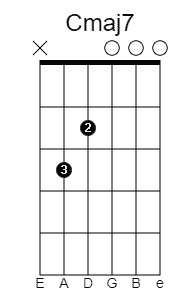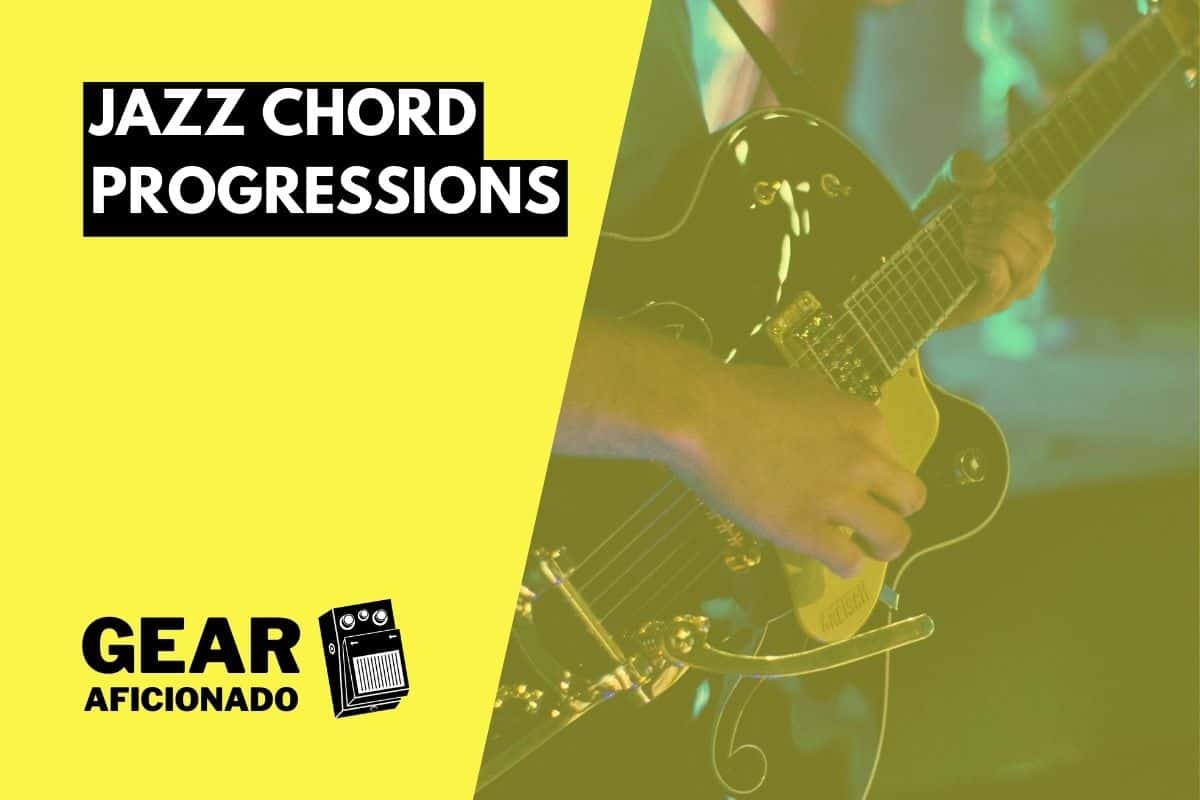Jazz is a musical style that’s famous for its intricacy and the multiplicity of chords and voices used to tell stories with music. Although it looks like Mission: Impossible from afar, there’s a method behind the madness and you’re about to learn all about it right here, right now.
Yes, this mission to the very heart of jazz guitar is departing now with a secret objective that’s mastering the 11 most important (and famous) jazz chord progressions of all time.
Debriefing is at zero six hundred hours and then we depart to the unknown. Get your gear and be ready, we’re going to save the world by playing the most amazing jazz tunes in history.
Let’s do this!
Let’s Talk Chord Substitutions
The first thing we’re going to tackle before you can board the plane and jump into enemy territory in the middle of the night are chord substitutions. Yes, the chord progressions you’re about to learn are the best path to jazz guitar domination but are also a little like scratching the surface of knowledge.
That’s why we are about to go through some of the ways you can spice up the classics and turn on the wow factor in people listening to you play.
Let’s take a look at some of the possibilities. Bear in mind that they are virtually endless, and thus, they would require an entire debriefing just for them. We’ll see just the most important ones.
The iii Replaces the I
The first possibility to make the common chord progressions sound a little different is to replace the almighty major I chord with the minor iii chord. Yes, I know what you’re thinking, and the answer is yes: you can swap one for another without any need to do anything else.
For example, if we were in the key of C major and we wanted to perform this substitution, we would replace the CMaj7 with an Em7.


They might look very different, but the beauty of chords is that you shouldn’t judge them for what they look like but for what notes are needed to form them. In this case, for example, the notes you need to put together an Em7 are, essentially, the same as for a Cmaj9 (without the root).
- Cmaj7 – C – E – G – B
- Em7 – E – G – B – D
- Cmaj9 – C – E – B – D (if you were a piano player, you could add the G)
Let’s try a little example, pick any key you like and play the following chord progression: iii – vi – ii – V. In case you don’t know, the uppercase Roman numerals stand for major chords and the lowercase numerals stand for minor chords. For example, in C major that would be Em7, Am7, Dm7, G7.
Try it again with the swapped chord and alternate them to see if you can grasp the nuance and start incorporating this substitution into your regular playing. That would be Cmaj7, Am7, Dm7, G7.
#i Diminished Replaces VI7
To replace the VI chord in your key, you can simply use the #i diminished chord. A very common example of this substitution is the I – vi – ii – V progression becoming the I – #idim – ii – V.
The theory behind this substitution is very similar to the last one. we can say that a dominant seventh chord (with a flat 9) shares notes with the diminished seventh chord. Thus, we can replace the VI by the #idim chord easily.
Let’s put this to work by using it in a chord progression in the key of C major:
I – vi – ii – V = Cmaj7 – Am7 – Dm7 – G7
Now, let’s replace that structure with what we just saw; what we get is:
I – #idim – ii – V = Cmaj7 – C#dim7 – Dm7 – G7
Let me introduce you to the C#dim7 chord:

Let’s Talk Diminished Passing Chords
Passing chords are a great way to add your own personality to any classic jazz standard. Yes, you might know that you can use some chords that aren’t within the list you “need” to use as a passing tone to get to the chord you want to arrive at.
These passing tones can very well be diminished seventh chords. Yes, you can use them as a passing tone between two chords to add some more texture and 3-d-like quality to your compositions.
But how exactly is it that you can do this trick? Well, it’s not only very easy but also very recommended that you learn this so you can sit comfortably at any jazz jam session and understand the chord progression without being deceived by the use of these passing chords.
For example, a very common use of this resource is to go from Imaj7 to iim7. For example, going to the C major key again, that would be moving from Cmaj7 (Imaj7 chord) to C#°7 (° is the symbol for diminished) to arrive at Dm7 (iim7 chord).
Moreover, you can also use the diminished seventh passing chord trick to go from that iim7 to the iiim7. That would be moving from Dm7 (iim7) to D#°7 (#II°7) to Em7 (iiim7).
Does it look a little confusing still? Don’t worry, let’s put this whole thing to work into a simple succession of chords so you can play it.
Also, if you want to take this practice further and hear real-world examples, a great pair of songs to hear to and practice these changes are “Have You Met Miss Jones” by Kenny Burrell or “Cherokee” by Tal Farlow.
But before you jump into those songs, let’s practice the movement right here, right now.
Play: Cmaj7 – C#°7 – Dm7 – D#°7 – Em7 – A7

That will give you the material you need to appreciate the nuances of these chords that act as a superglue to keep the composition closer together.
11 Jazz Chord Progressions
- iim7 – V7 – Imaj7
- Imaj7 – vim7 – iim7 – V7 – iiim7 – VI7 – iim7 – V7
- Imaj7 – iim7 – V7
- Imaj7 – #I°7 – iim7 – #II°7 – iiim7 – VI7
- Imaj7 – II7 – iim7 – V7 – Imaj7
- Imaj7 – iim7 – V7 – IVmaj7
- Imaj7 – I7 – IVmaj7 – ivm7 – iiim7 – VI7 – iim7 – V7 – Imaj7
- III7 – VI7 – II7 – V7
- iim7b5 – V7 – im7
- Imaj7 – VI7 – iim7 – V7
- Imaj7 – I#dim7 – iim7 – V7
The Bottom End
You’ve just been debriefed to go on Mission Impossible and conquer some of the quintessential, basic, core progressions your jazz chops need to get to the next level. Also, you’ve experienced and practiced some of the best-kept secrets to spice up the basis and engage the wow factor in your listeners.
Now, you’re one step closer to being that amazing jazz guitarist you’ve always dreamt of being. So, practice hard, make these tricks part of your aces up the sleeve, and go play the night away with your jazz-loving friends; you’re ready to take on that challenge.
Go out there, play jazz with your life, and never forget to enjoy the ride to stardom, life’s a journey, not a destination.
Happy (jazz) playing!

Hello there, my name is Ramiro and I’ve been playing guitar for almost 20 years. I’m obsessed with everything gear-related and I thought it might be worth sharing it. From guitars, pedals, amps, and synths to studio gear and production tips, I hope you find what I post here useful, and I’ll try my best to keep it entertaining also.





